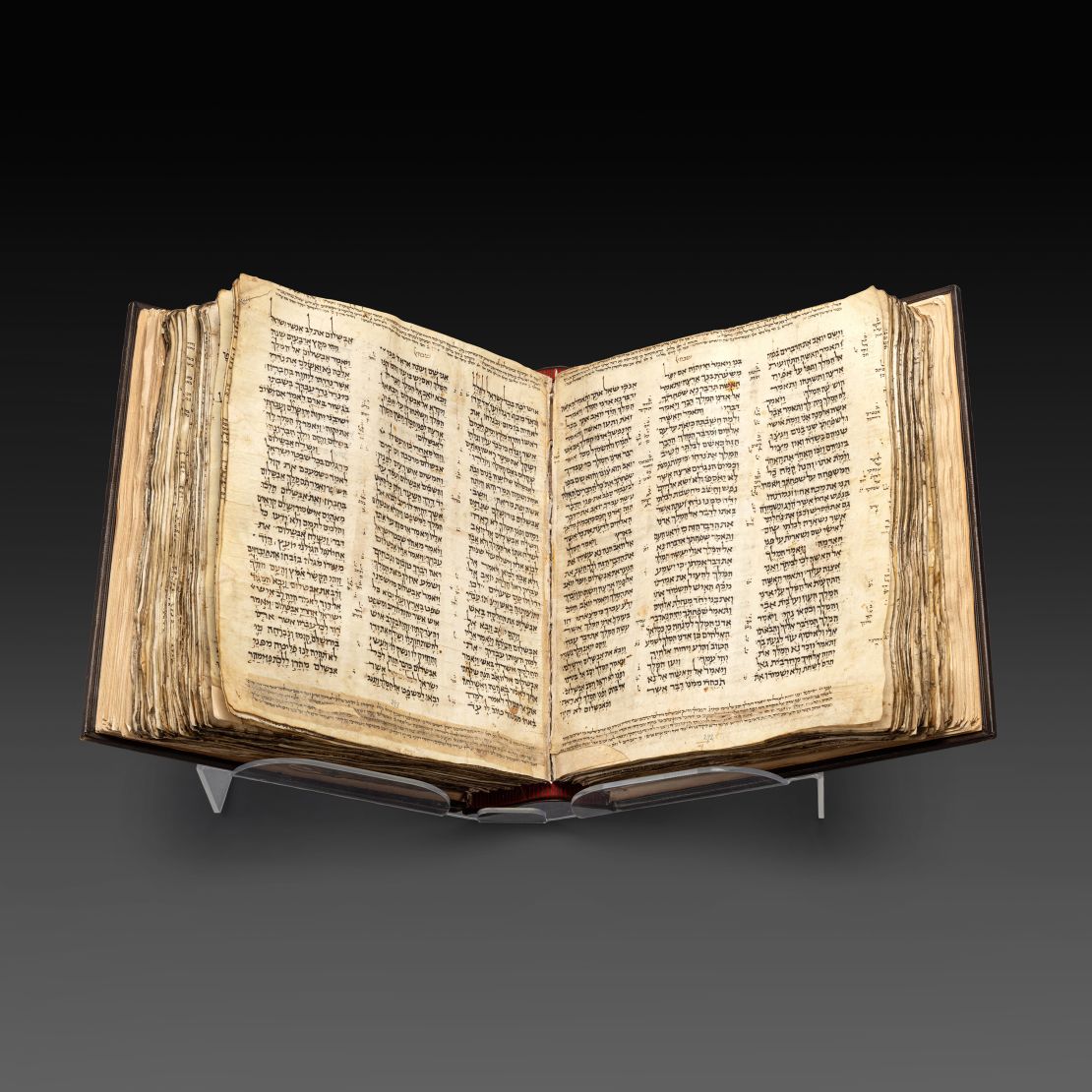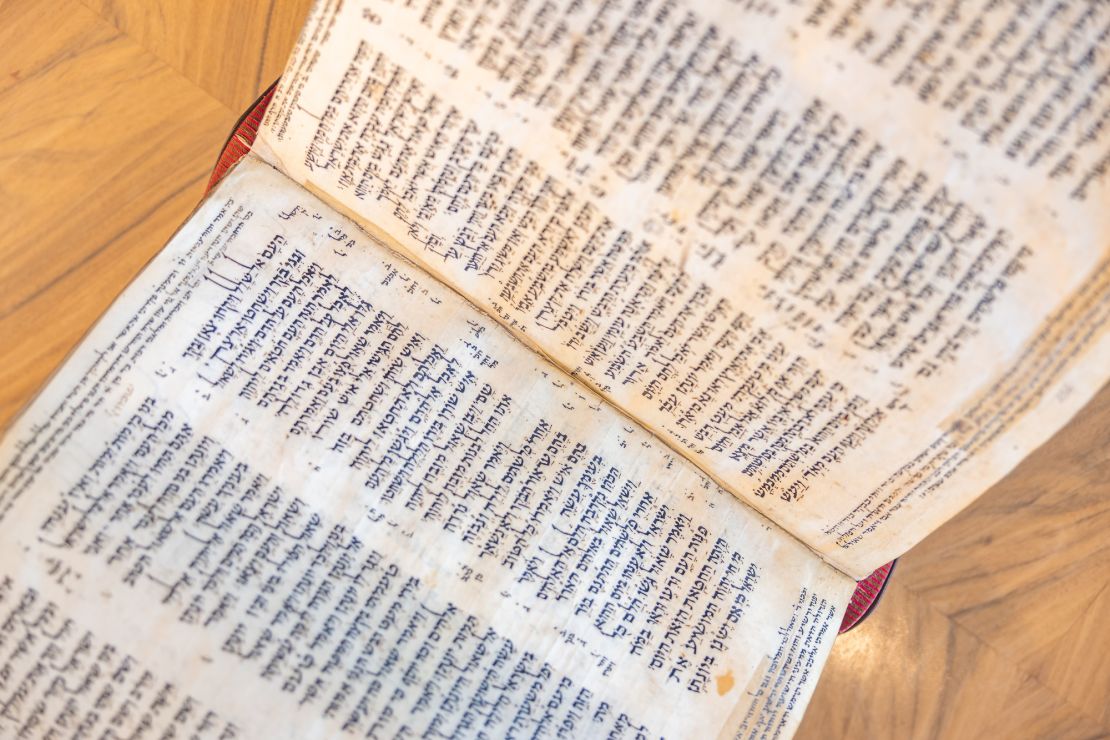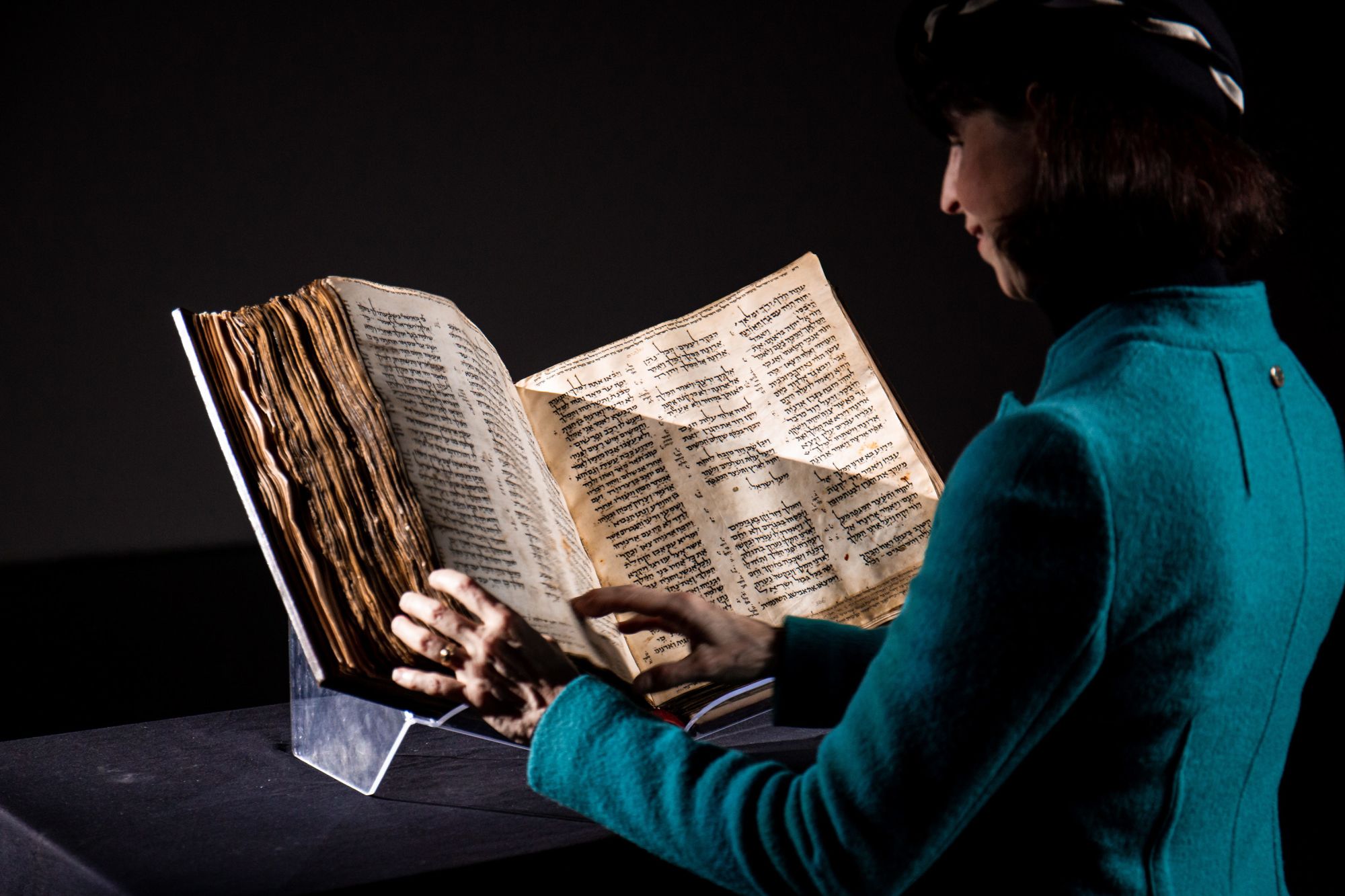A Hebrew Bible more than 1,000 years old and described as “one of the most important and singular texts in human history” has become the most valuable manuscript ever sold at auction.
The Codex Sassoon, dating from the late 9th or early 10th century, sold for $38.1 million at Sotheby’s in New York on Wednesday. It is believed to be the earliest and most complete Hebrew Bible. The last manuscript to top sales records was Leonardo da Vinci’s Codex Leicester, which sold for $30.8 million in 1994, according to Sotheby’s.
The Codex Sassoon fell short of its high estimate of $50 million, however. Prior to the sale, it went on exhibit in the UK and Israel.
Sharon Mintz, Sotheby’s senior Judaica specialist, books and manuscripts, told CNN ahead of the auction that “this is the most important document to come to auction ever.”
The Hebrew Bible is the foundation of the three Abrahamic faiths: Judaism, Christianity and Islam.
Scholars have long been aware of the codex named after renowned Judaica collector David Sassoon (1880-1942), but it has remained largely out of public view, Sotheby’s noted in a news release.

Mintz described the Codex Sassoon, which includes 792 parchment pages — made from animal skins — and weighs about 26.5 pounds, as a “lavish production that only the most wealthy could have afforded.”
The manuscript’s previous owner purchased the codex in 1989 and was “delighted to be able to share it with the world,” Mintz said.
A rare find
The Codex Sassoon is believed to be the very first codex, or manuscript in book form, of the Hebrew Bible. In the centuries prior to its writing there were only portions or sections of biblical texts in scroll form — which came to be known as the Dead Sea Scrolls. But these contained no verses, chapters or punctuation, according to Sotheby’s.
Jewish people in antiquity came to rely on oral tradition passed down through generations to understand and preserve the message of the Bible, the statement noted.
This document and the Aleppo Codex, housed at the Israel Museum in Jerusalem since 1958, are the only two codices dating to the 10th century and comprising almost all of the Hebrew Bible.
But, according to the museum, the Aleppo Codex was badly damaged in a fire at the community’s synagogue in 1947, and today “no more than 295 of the original 487 leaves [pages] survived.” By contrast, the Sassoon codex is only missing 12 full pages, and therefore “is thus the earliest, most complete copy of the Hebrew Bible extant,” according to Sotheby’s.
Richard Austin, Sotheby’s global head of books and manuscripts, added in the release: “Codex Sassoon has long held a revered and fabled place in the pantheon of surviving historic manuscripts and is undeniably one of the most important and singular texts in human history.”

Centuries-old annotations and inscriptions
The historical significance of the codex is not just the printed material, but the hand-written annotations and inscriptions added over the years — hinting at the epic journey it has taken.
An entry from the early 11th century refers to a sale by Khalaf ben Abraham, perhaps in Israel or Syria, to a man called Isaac ben Ezekiel al-Attar, who later transferred it to his two sons.
The next location mentioned in the annotations came in the 13th century when it was dedicated to the synagogue of Makisin (present-day Markada in northeastern Syria).
It was likely rebound at this stage, according to Sotheby’s, and inscribed with the words “consecrated to the Lord God of Israel to the synagogue of Makisin.”
Makisin was later destroyed and the codex was entrusted to a community member called Salama bin Abi al-Fakhr who pledged to return it to the synagogue in the event of regeneration.
But the synagogue was never rebuilt and the codex continued on its odyssey until it was acquired by Sassoon in 1929.
Top image: A woman examines the centuries-old Hebrew Bible.
A previous version of this article contained an image, provided by Sotheby’s, in which the Bible text appeared upside-down. This has since been corrected.



